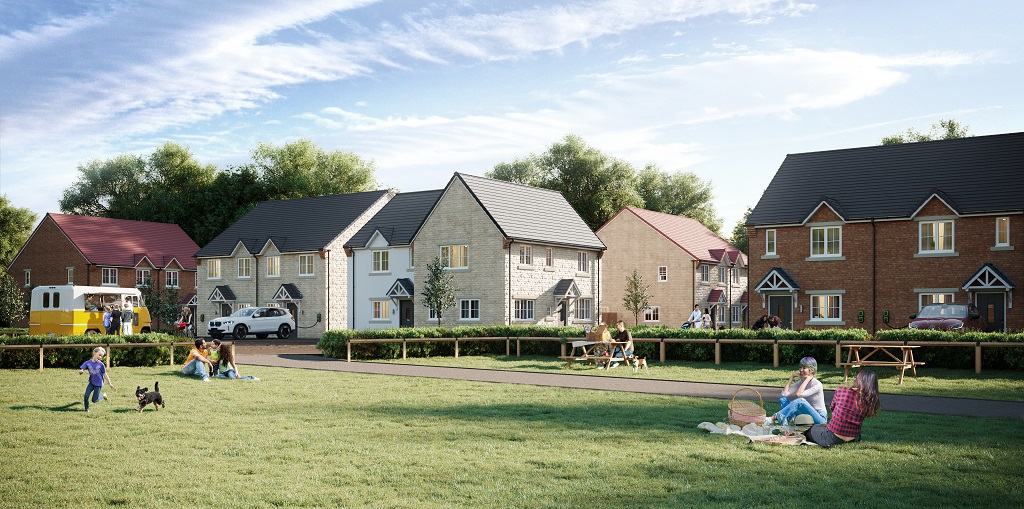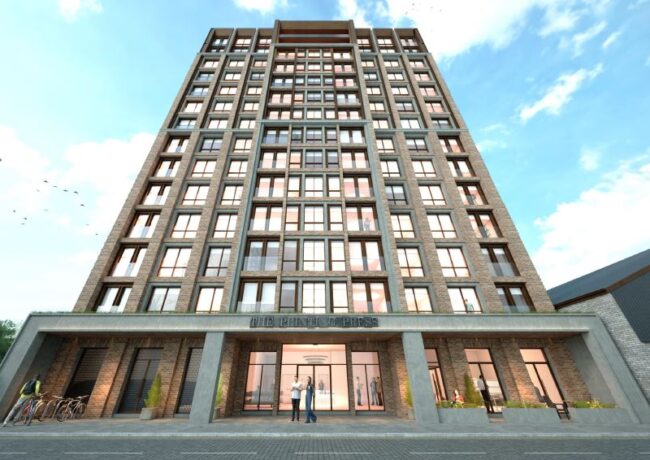The Subplot
The Subplot | Single family rental’s golden opportunity, Liverpool offices
Good Thursday morning,
THIS WEEK
- The silver lining: harder times ahead for the new-build housing market creates a wonderful opportunity for single family rental
- Elevator pitch: your weekly rundown of who is going up, and who is heading the other way

THE SILVER LINING
Every cloud has one
After a strong five years, city centre build-to-rent could be overtaken by suburban single family rental, as investors pile into the North West. A tough few years for house-buyers will help, not hinder, the transition.
Rising interest rates, tighter mortgage criteria, the end of the life-support drip of Help to Buy, soaring construction costs and some ludicrous land prices, all spell a period of potential trouble for the UK homes-for-sale market. But a few missteps by the big housebuilders could create a golden opportunity for the £7bn+ single family rental sector.
A word about words
SFR is the version of the build-to-rent sector aimed at suburban, mid-income families, rather than at high-end apartments for youthful city centre dwellers (in the US this is called multifamily rental). Cushman & Wakefield says there are about 230,000 SFR homes in the pipeline in the UK and the list of players in the North West SFR scene is getting very long.
The list includes
Harworth is seeking an investor to forward-fund the construction of 1,200 two- and three-bedroom single-family homes across 10 sites over the next three years. Moss Nook in St Helens and Stopes Road in Little Lever are targets. Moda has a new division – Casa by Moda – targeting 5,000 new SFR homes by 2025, while Urban Splash nurses plans for a £3bn rental development pipeline including a heavy chunk of suburban housing. Place Capital Group is working with Together Housing on something similar in council estates in Blackburn and Lancaster.
Lovely numbers
The appeal to investors and developers is clear enough: SFR means long-term stable income from nice sensible people who, once the kids reach school age, are unlikely to move on a whim. This contrasts with the tenant merry-go-round of multifamily apartments. Operators and investors have also made some (optimistic) assumptions about lower management costs in SFR, which may or may not be wise of them, but for now it makes the appraisals look fantastic. Overheads shrink by about half, which isn’t at all bad. Yields move out for SFR: the gap between 4.5% for multifamily and SFR’s 4.75% which is enough to make a difference (yields vary, obvs).
Lovely residents
There’s also the tenants to consider. Long-term rental can be a good value proposition, particularly if mortgage rates rise and lending criteria get tighter, as Cushman & Wakefield research published last week seems to show.
Carpe diem
Bad times for housebuilders create a wonderful business opportunity for SFR developers because getting the sites they need at fairly low levels of risk has been tough. That’s because the big housebuilders have control of most, and can outbid SFR players (usually). If housebuilders suddenly feel a chill, SFR gets a chance. Multifamily in the UK got going in part because the for-sale apartment market hit a tricky patch. Developers were glad to sell entire blocks, and investors glad to buy them. The hope is that the North West’s small but growing SFR market will enjoy the same kind of lift as housebuilders offload entire built estates, or chunks of them.
Risk versus reward
If SFR investors want to build their own properties – and many do – they can comfort themselves with the feeling that it is a lot less risky than building a block of city centre rental apartments. Partly that is because city centre developments, often tall and on constrained sites, rack up large construction bills. Partly that is because you can’t stop building a 300-unit apartment block half way, and say you don’t feel like finishing it until the economy picks up. Neither problem arises with an SFR housing estate: you can pause whenever you like, and construction costs are a known unknown.
Challenges
This is not to say there aren’t challenges. Akeel Malik, fund manager of Urban Splash Residential Fund, says: “As the quality of housing stock in the UK is so varied, sourcing high-quality, well-designed SFR homes in strategic locations is more difficult than multifamily; values in suburban locations can vary significantly, and with the current inflationary environment the viability of these lower density schemes can be challenging, particularly in markets where there is limited existing rental evidence to support underwriting assumptions.”
Count once, count twice
But operational costs remain a thorny issue. Says Malik: “Whilst running costs of SFR may be lower due to reduced common areas and amenities, it is important to include a capex contribution for future potential works to reflect the true cost of operating SFR assets – as they are larger and more exposed, there are potentially more costly maintenance works over the asset lifecycle. There are also challenges providing a full-service operating platform with a more dispersed SFR portfolio.”
Check those appraisals
The gist of the problem here is that SFR housing in fairly low value property areas doesn’t generate mighty rents, yet the costs of green communal open spaces and nicely kept bin-sheds are pretty much the same as in high-value areas. Subplot was told by one substantial investor to ask questions about any regional deal assuming a yield too close to 4%, in case it concealed fanciful assumptions about operational costs.
The growth of North West SFR will not be smooth. While there’s a lot of overseas money trying to get into the sector – much of that £7bn is international – the opportunities for spending are limited and that can lead to silly prices and over-confident assumptions. But if the heat comes out of the new-build housing sector – and it surely will once economic reality kicks in – then SFR is well placed to take up the slack.
 ELEVATOR PITCH
ELEVATOR PITCH
Going up, or going down? This week’s movers
Liverpool’s city centre office market develops some spindly legs, so takes the stairs, while local councils await the big reveal of £500m of Levelling Up spending. Stand clear of the doors, please. Going down.
 Liverpool numbers
Liverpool numbers
Modestly encouraging second quarter take-up figures for the Liverpool office market are a welcome sign that the city’s commercial heart is still beating, even if city centre take-up rising by 47,000 sq ft, and out-of-town take-up sinking by 40,000 sq ft, scarcely justifies claims of recovery. But something the numbers do show is that it will soon be time to ask ‘what has happened to Kier and CTP’s £200m Pall Mall office scheme?’
The 112,000 sq ft first phase has been in some kind of holding pattern for years. Speculative development has always looked unlikely without some kind of public sector wrap-around lease, so when or whether it gets built depends heavily on public sector attitudes towards risk and reward. A few more quarters in which the city centre market shows it has legs (albeit spindly ones) might help convince the powers that be. Or maybe it won’t.
 Long-term regeneration
Long-term regeneration
So, here we go again. Tuesday was the deadline for the latest round of local authority bids for a share of the £4.8bn Levelling Up pot. Place North West’s spreadsheet suggest councils are seeking in excess of £500m for a variety of worthy projects. Good luck to all concerned.
The difficulty, as economists, local politicians and, increasingly, the North West’s property industry keep pointing out, is that a funding tap that is periodically turned on, then turned off, on the basis of opaque and capricious criteria, tends to make long-term economic renewal all but impossible. Stability is what you need, not the theatricality of deadlines and the showmanship of the big reveal when the winners are announced.
Mutinous noises in the property industry are still at the level of whispers, not shouts, but the growing sense of disengagement with the process (and unwillingness to invest much time in potentially fruitless bids) is palpable. Some wonder how much longer this tired format has to run.
Get in touch with David Thame: david.thame@placenorthwest.co.uk | 01544 262127
The Subplot is brought to you in association with Oppidan Life.






Utter nonsense from this Manchester rag
By Anon
@anon which part in particular has put you in a tantrum?
By Anonymous
Anon. 3.42 A little more detail please ? Without that it comes across as merely a rant.
By Anonymous
Always end on a negative Dave
By Ann